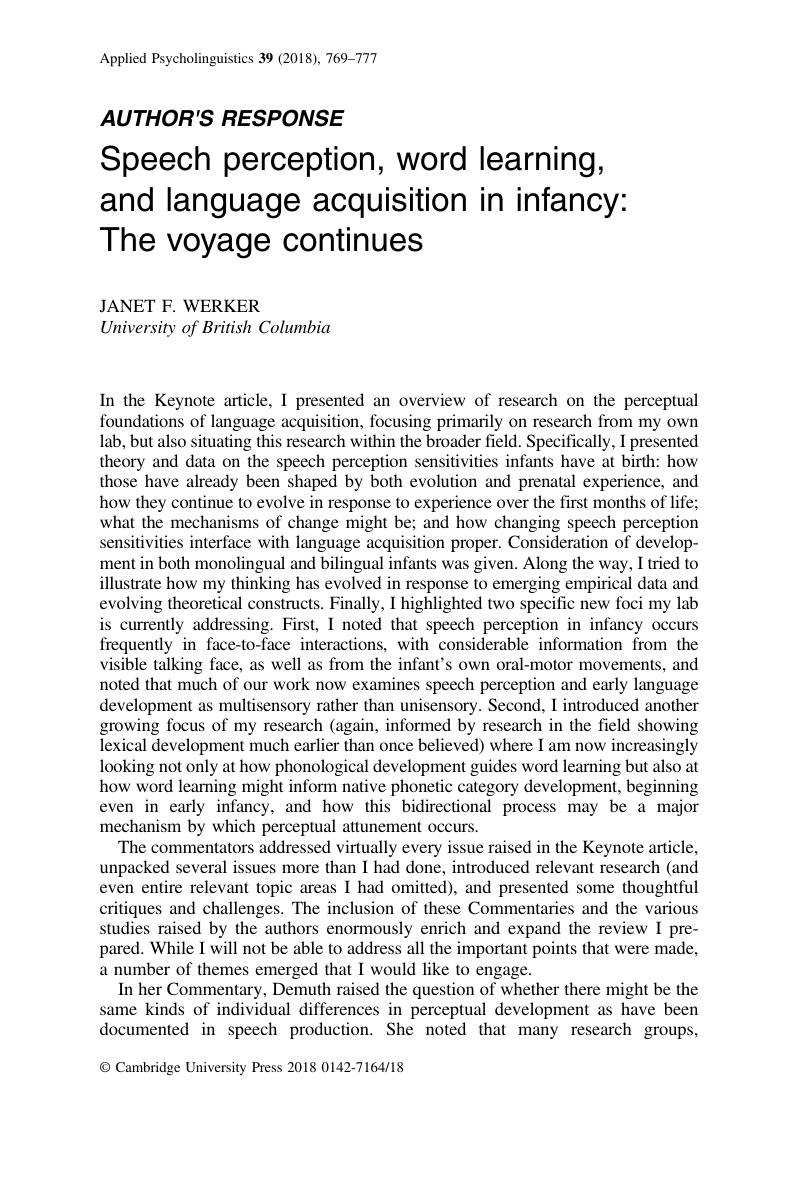Crossref Citations
This article has been cited by the following publications. This list is generated based on data provided by Crossref.
Breen, Ellen
Pomper, Ron
and
Saffran, Jenny
2019.
Phonological Learning Influences Label–Object Mapping in Toddlers.
Journal of Speech, Language, and Hearing Research,
Vol. 62,
Issue. 6,
p.
1923.
Uchihara, Takumi
Webb, Stuart
Saito, Kazuya
and
Trofimovich, Pavel
2022.
THE EFFECTS OF TALKER VARIABILITY AND FREQUENCY OF EXPOSURE ON THE ACQUISITION OF SPOKEN WORD KNOWLEDGE.
Studies in Second Language Acquisition,
Vol. 44,
Issue. 2,
p.
357.
Uchihara, Takumi
Webb, Stuart
Saito, Kazuya
and
Trofimovich, Pavel
2023.
Frequency of Exposure Influences Accentedness and Comprehensibility in Learners’ Pronunciation of Second Language Words.
Language Learning,
Vol. 73,
Issue. 1,
p.
84.
Kalashnikova, Marina
Singh, Leher
Tsui, Angeline
Altuntas, Eylem
Burnham, Denis
Cannistraci, Ryan
Chin, Ng Bee
Feng, Ye
Fernández‐Merino, Laura
Götz, Antonia
Gustavsson, Lisa
Hay, Jessica
Höhle, Barbara
Kager, René
Lai, Regine
Liu, Liquan
Marklund, Ellen
Nazzi, Thierry
Oliveira, Daniela Santos
Olstad, Anne Marte Haug
Picaud, Anthony
Schwarz, Iris‐Corinna
Tsao, Feng‐Ming
Wong, Patrick C. M.
and
Woo, Pei Jun
2024.
The development of tone discrimination in infancy: Evidence from a cross‐linguistic, multi‐lab report.
Developmental Science,
Vol. 27,
Issue. 3,



